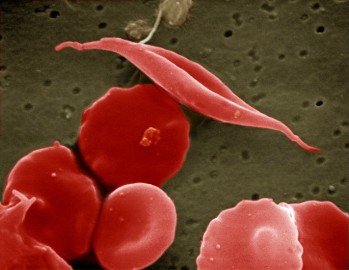Lasers listen to blood cell's lament
 Lasers may be able to detect diseases in individual blood cells, with new research suggesting the technique could be used in a number of ways.
Lasers may be able to detect diseases in individual blood cells, with new research suggesting the technique could be used in a number of ways.
The classic shape of a human red blood cell is well known, but when infected by certain diseases the cells have been shown to change their shape; the disease sickle-cell anaemia is named for its distorting effect on the blood cell. Blood cells stored in banks for transfusions change their shape too. A novel technique tested by Ryerson University in Toronto is using lasers to identify misshapen cells and thus diagnose a range of conditions.
The team used laser light to heat the haemoglobin within red blood cells without affecting the surroundings, resulting in an ultrasonic pressure wave that could be detected as sound and provide information about the cell's size and shape. Researchers then compared a sample of fresh red blood cells with cells which appeared spiky because their energy stores had been depleted. Just twenty-one cells and measurements that take a few seconds were needed for the team to distinguish normal from spiky cells.
As well as effective identification of diseases, the laser blood ultrasound technique can be used to monitor blood banks stocks and improve the rate of successful transfusion. Details and more information can be found in the report published by the Biophysical Journal.








 Print
Print